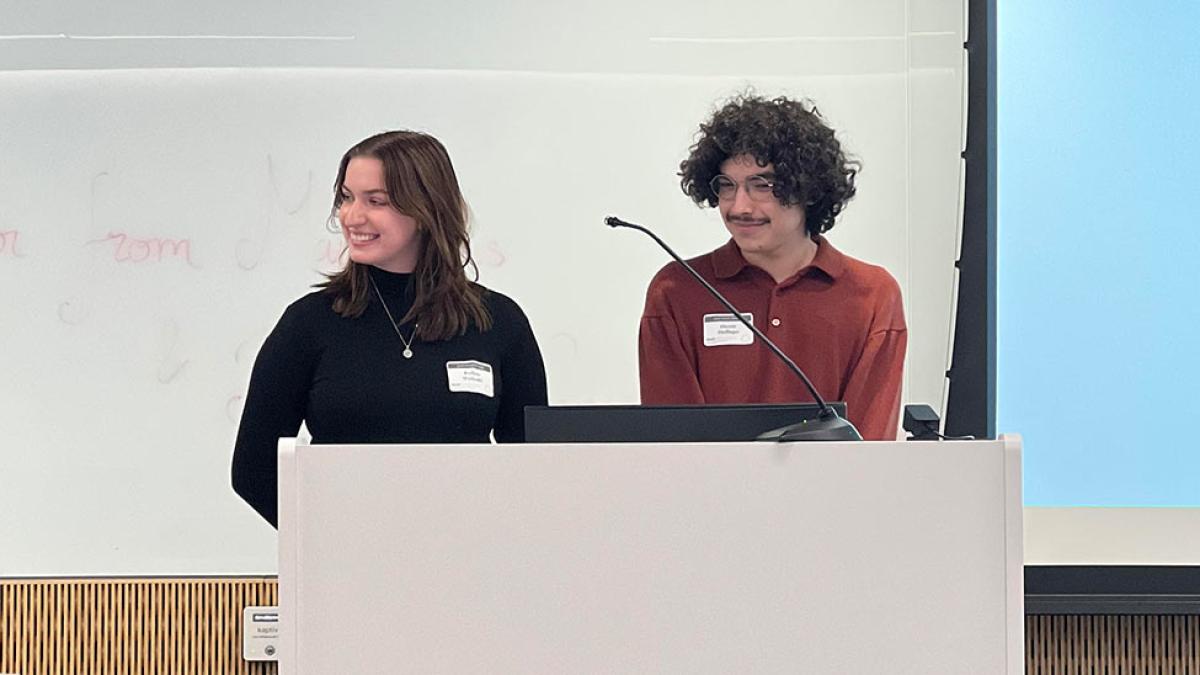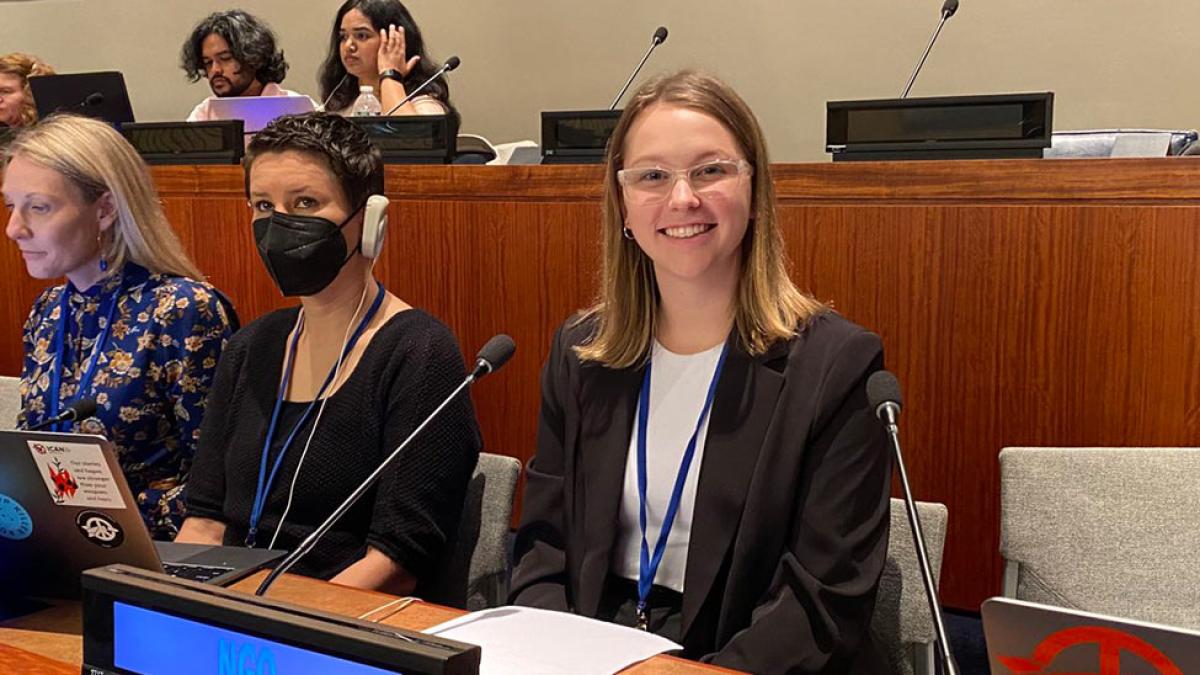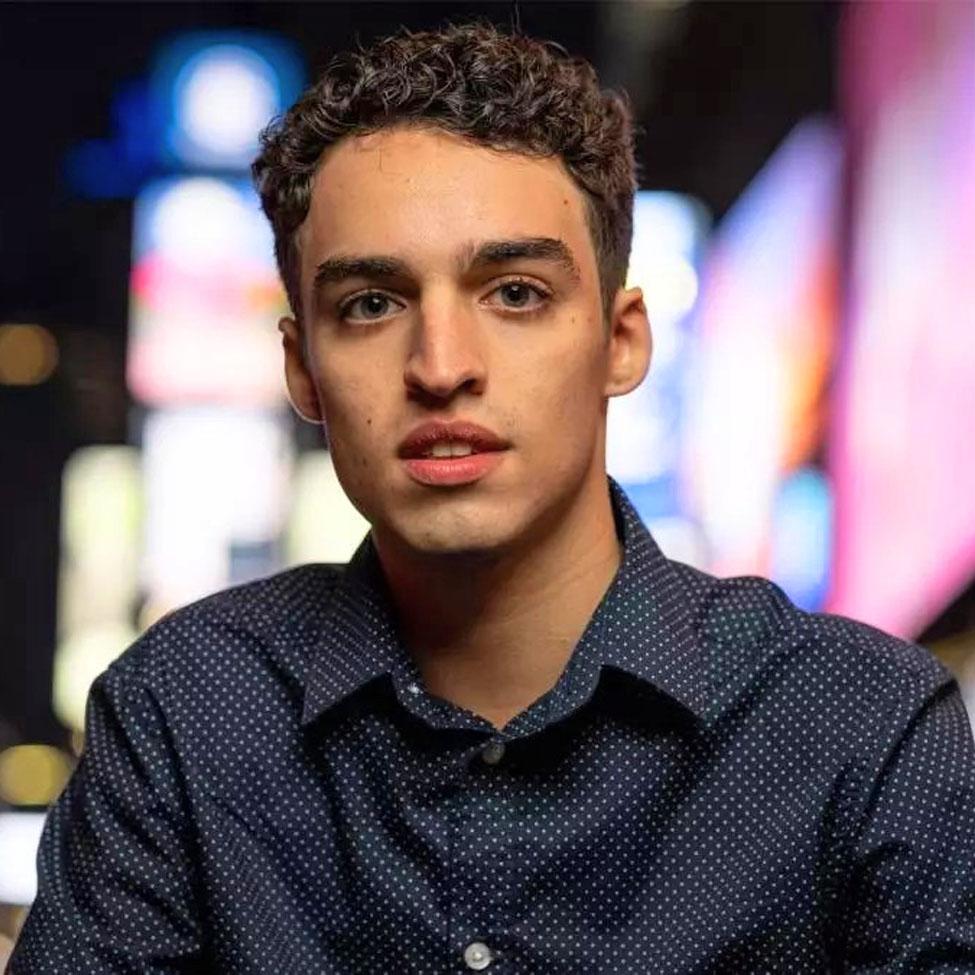
Entrepreneurial Insights with Isaiah Jimenez '23
In this episode of The Lubin Link, Isaiah Jimenez '23 discusses his passion for entrepreneurship, why he believes business students should take art classes, and his advice for fellow aspiring entrepreneurs.
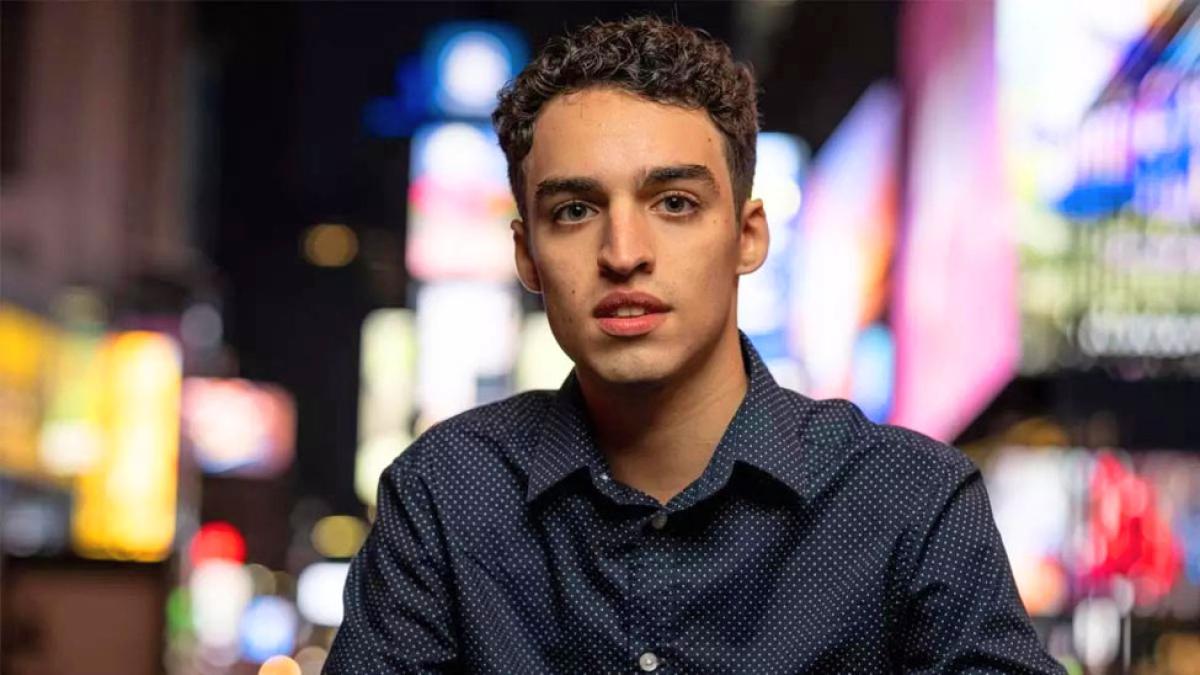
The Lubin Link Podcast

Isaiah Jimenez '23 embodies what it means to be an entrepreneur—and not just because he graduated from the Lubin School of Business with a BBA in Entrepreneurship. Before starting his career in real estate, Isaiah sold Pokémon cards as a kid, started his first business as a teenager, then continued to explore other entrepreneurial ventures throughout college. In this episode of The Lubin Link, Isaiah discusses his passion for entrepreneurship, why he believes business students should take art classes, and his advice for fellow aspiring entrepreneurs.
This episode was recorded on October 3, 2023.
Tune into the Lubin Link podcast to hear how guests went from go-getting Lubin students to successful entrepreneurs, social media mavens, directors, CEOs, and beyond. They offer their best tips to students and share how you can make the most out of your #LubinLife.
Unlocking Opportunities: Pace University Job Fair Opens Doors for Students and Employers
Pace University Career Services on Friday hosted one of its signature events: the Fall 2023 Job and Internship Career Fair. With record-breaking student turnout, it was one of the largest Job Fair in the University’s history.
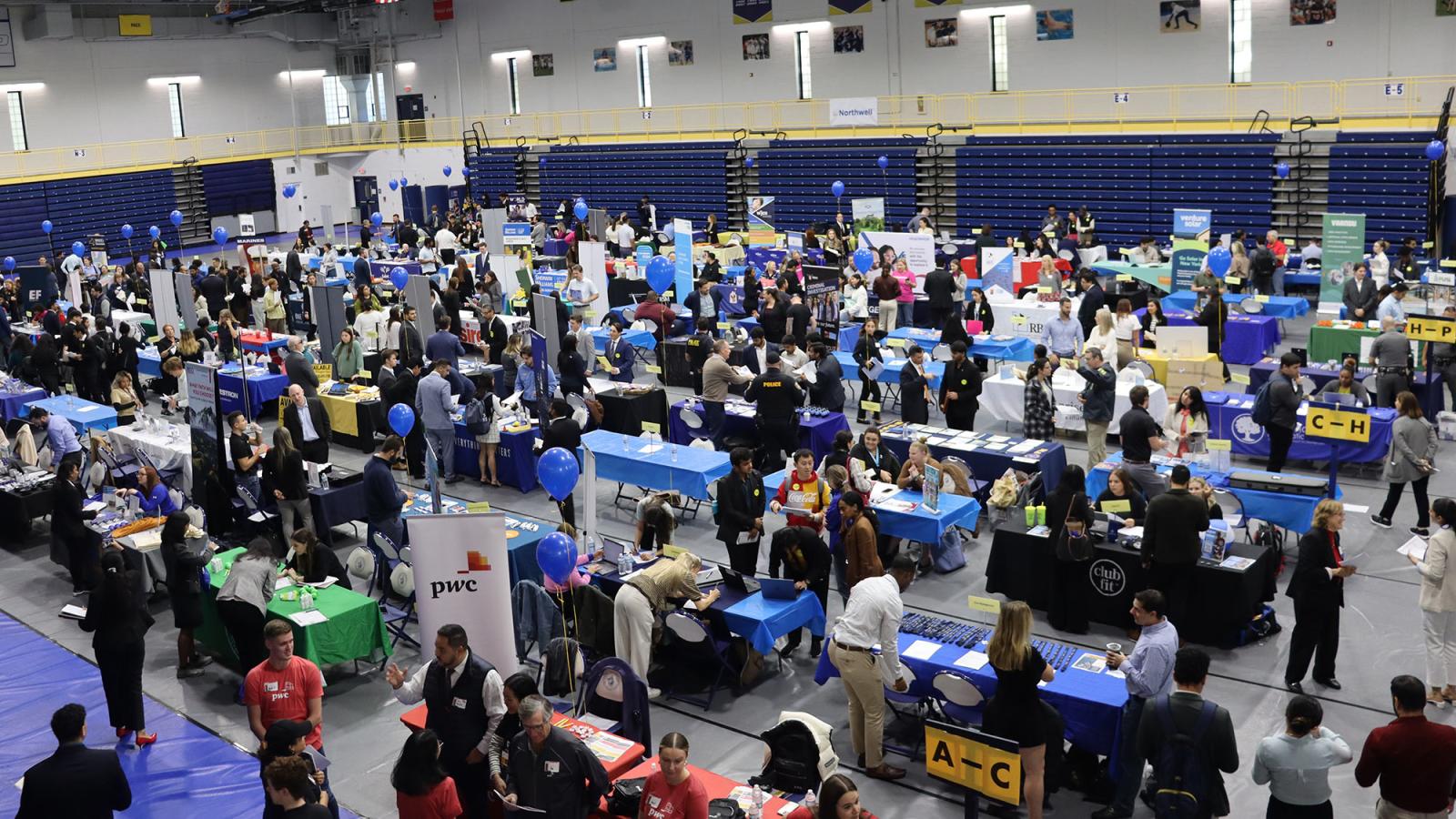

Northwell Health, Regeneron Pharmaceuticals, and Sumitomo Mitsui Trust Bank among over 115 recruiters
Pace University Career Services on Friday hosted one of its signature events: the Fall 2023 Job and Internship Career Fair. With record-breaking student turnout, it was one of the largest Job Fair in the University’s history.
Nearly 800 hundred students turned out – including many from Pace’s campus in lower Manhattan -- to the employment fair. Over 115 companies were in attendance including Northwell Health, Regeneron Pharmaceuticals, Sumitomo Mitsui Trust Bank, and Unilever, among many others. The event featured employer sponsored food and coffee trucks, smoothies from the University’s student-run businesses, music, and other amenities like a Quiet Room.
The fair was open to all majors and was sponsored by PricewaterhouseCoopers (PwC), which is among the Big Four accounting firms, offering clients various professional business services, including accounting, auditing, human resources consulting, and strategy management.
“At Pace, we understand the importance of engaging and preparing our students early, and creating impactful employer events that lead to great internships and jobs,” said Phyllis Mooney, Assistant Vice President of Career Services at Pace University.
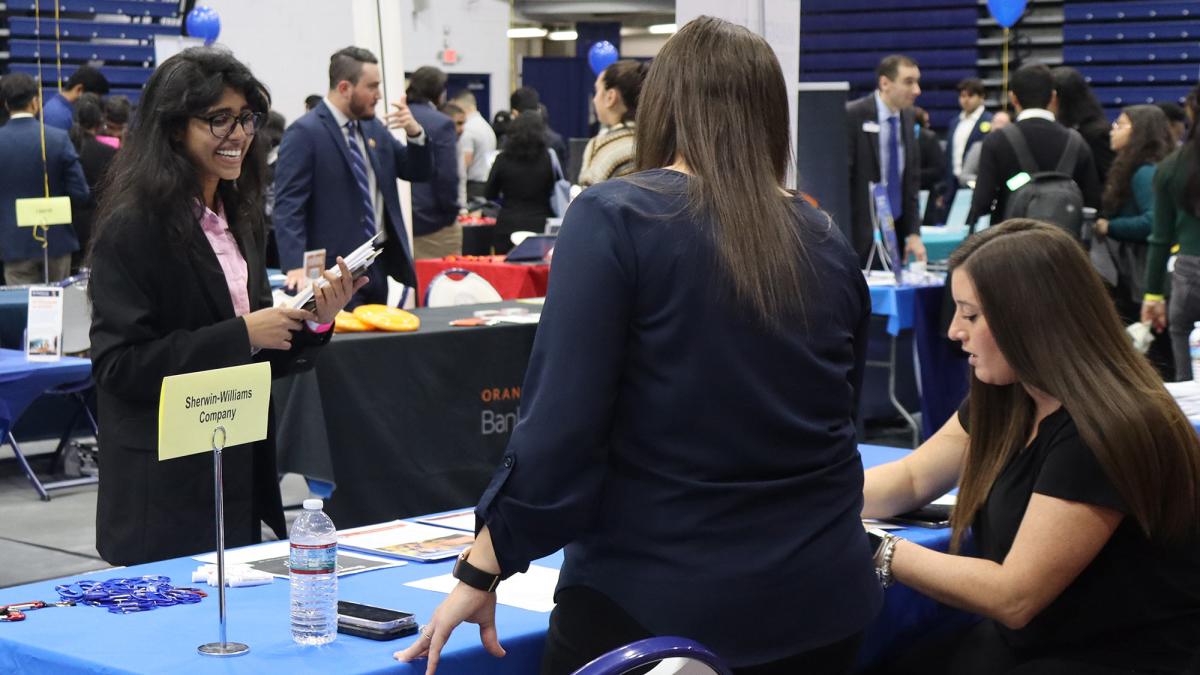
Pace’s Career Services is a leader in the region for providing a range of career counseling and programming to ensure that the students they serve are career-ready and know how to confidently articulate the skills employers are looking for in their industry. In fact, over the last 5 years of graduating classes (2017–2021), Pace’s overall employment rate for Bachelor and Master graduates has been 10 percentage points higher than the national average according to The National Association of Colleges and Employers (NACE) “First Destination Survey” report.
In addition, NACE’s latest Salary Survey report showed positive outcomes for Pace's Class of 2022. Bachelor graduates had full-time salaries that were $7,000 higher than the national average. The report also examined specific majors, with Pace's Registered Nursing majors earning $29,000 more; Communication, Journalism, and related programs earning $5,600 higher; Psychology $8,500 higher, Criminal Justice and Corrections $19,000 higher; and Finance $7,700 higher. For master’s graduates, majors like Education and Accounting earned $14,000 and $10,000 more respectively – all of which demonstrates Pace’s success.
Pace’s Career Services also offers their employer partners a tailored, successful recruiting experience that introduces recruiters to talented students that represent the very best of Westchester, the New York City region, and the world—resulting in extraordinary outcomes. Top brands that employ Pace students include Deloitte, EY, KPMG, Montefiore, New York-Presbyterian, Northwell Health, NYU Langone Health and PwC.
For Rishitha Mandali, a sophomore majoring in computer science, the packed room provided ample opportunities to land a job or an internship.
“It’s quite an advantage to have opportunities not only in New York City but also in Westchester,” said Mandali, who was among students from the lower Manhattan campus that attended the Job Fair. “It’s important to be exposed to different employers as this helps us navigate aligning our skills and interests to our future jobs.”
Sidney Nivar, a junior and sports marketing major, was surprised by the number of employers in attendance.
“There are so many opportunities,” Nivar said. “This is my second time attending and it was great being able to speak to employers. Career Services does a great job connecting students to employers. I am hopeful to get an internship after this.”
About Pace University
Since 1906, Pace University has been transforming the lives of its diverse students—academically, professionally, and socioeconomically. With campuses in New York City and Westchester County, Pace offers bachelor, master, and doctoral degree programs to 13,600 students in its College of Health Professions, Dyson College of Arts and Sciences, Elisabeth Haub School of Law, Lubin School of Business, Sands College of Performing Arts, School of Education, and Seidenberg School of Computer Science and Information Systems.
Why Plating Food In Odd Numbers May Hold More Visual Appeal
In a geometric sense, plating in odd numbers creates a line that the eye feels drawn to follow. One study by Terence Hines of Pace University found that odd numbers are literally more thought-provoking than even numbers. Hines displayed two numbers on a screen and asked participants to press a button only when the numbers were either both even, or both odd. On average, it took participants 20% longer to press the button when both numbers were odd, as it took the brain longer to process them.
Expanding the Definition of Low-Impact-Development to Align with the Goals of Climate Resilient Development
Municipalities use local-level land use law for a variety of purposes. The Land Use Law Center at the Elisabeth Haub School of Law at Pace University (the Center), in 2022, engaged in a project to analyze how municipalities are using their land use powers to advance the various goals of climate resilient development (CRD). The Center produced a set of guidelines for analyzing municipal CRD strategies (PDF) by answering the following questions: 1. What CRD objectives does this strategy achieve, 2. What methods are there to ensure resilience, 3. What methods are there to avoid maladaptation, and 4. What is the feasibility of this strategy? These focus areas are borrowed from the Summary for Policymakers in the Intergovernmental Panel on Climate Change’s (IPCC) Working Group II Sixth Assessment Report, Climate Change 2022: Impacts, Adaptation and Vulnerability, which featured CRD as one of the proposed solutions.
TROUBLE ON 2 WHEELS: Scooter-Riding Thieves Wreak Havoc Across NYC, With 3 New Sprees Investigated
Darrin Porcher, a criminal justice professor at Pace University and former NYPD sergeant, said the city needs to do more to crack down on the increasingly lawless domain of scooters and mopeds, many of which don't even have license plates. "I believe the NYPD now has to construct an enforcement unit that specifically targets mopeds, scooters," Porcher said. "We have people that ride scooters and mopes that act with impunity as they drive through our streets. They commit crimes and nothing is being done about it."
Legal Experts: New Jack Smith Filing Blows a Big Hole in Trump's Election Interference Defense
“Knowing this will enable the prosecutors to prepare to counter that defense through witnesses and arguments showing the weakness of that defense, and indeed, that such defense is completely untenable given Trump’s statements and actions that show he himself made all the critical decisions relating to subverting the 2020 election results,” Bennett Gershman, a former New York prosecutor and law professor at Pace University, told Salon.
2023 Power Players in Education
Pace President Marvin Krislov for making the Politics NY 2023 Power Players in Education list.
Marvin Krislov has served as president of Pace University since 2017. He is deeply committed to Pace’s mission of Opportunitas: providing all students, regardless of economic background, access to the transformative power of education. Under his leadership, Pace is developing innovative new interdisciplinary programs, continuing the transformation of its New York City Campus, and delivering on its experiential education model, the Pace Path, that produces superior career outcomes.
Three Dyson Students Deliver Statements to the UN General Assembly First Committee
On Wednesday, October 11, Political Science and Peace and Justice Studies students Ellis Clay ‘25, Antje Hipkins ’24, and Jasmine Cintron Soto ’25 delivered statements to the United Nations General Assembly First Committee, a forum focused on global disarmament and international security.
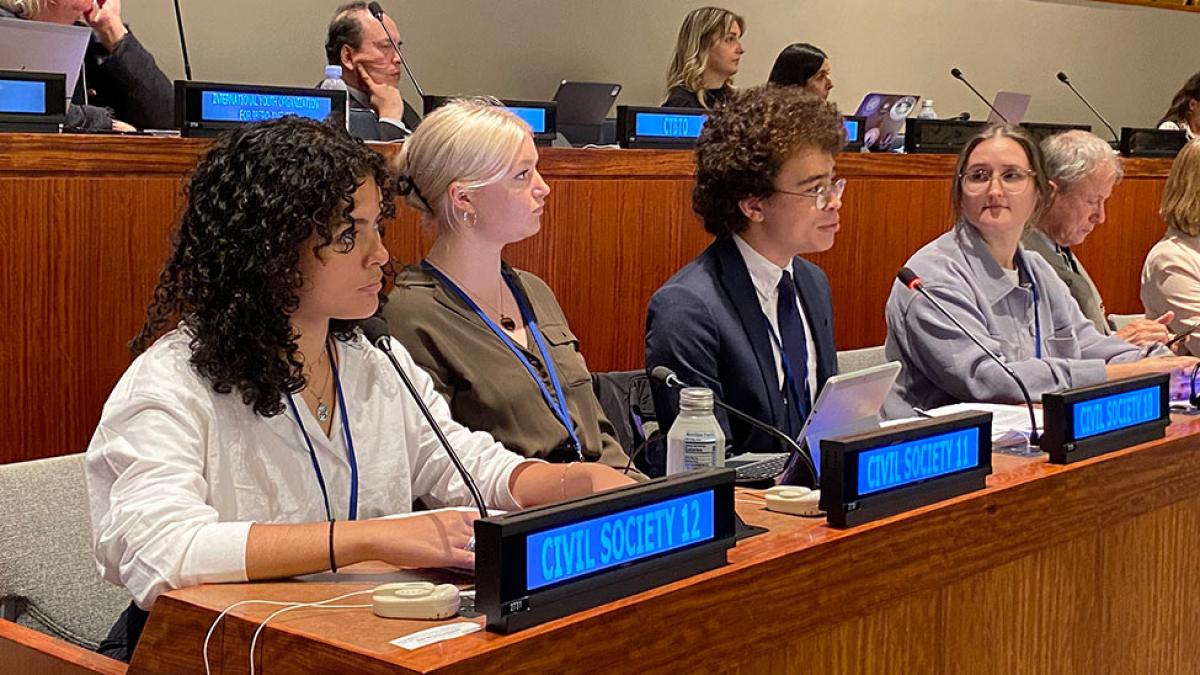
On Wednesday, October 11, Political Science and Peace and Justice Studies students Ellis Clay ‘25, Antje Hipkins ’24, and Jasmine Cintrón Soto ’25 delivered statements to the United Nations General Assembly First Committee, a forum focused on global disarmament and international security.
Clay, Hipkins, and Cintrón Soto are interns at Dyson College’s International Disarmament Institute, and, under the advisement of Associate Professor Emily Welty, PhD, engage directly with the UN General Assembly First Committee and with civil society organizations.
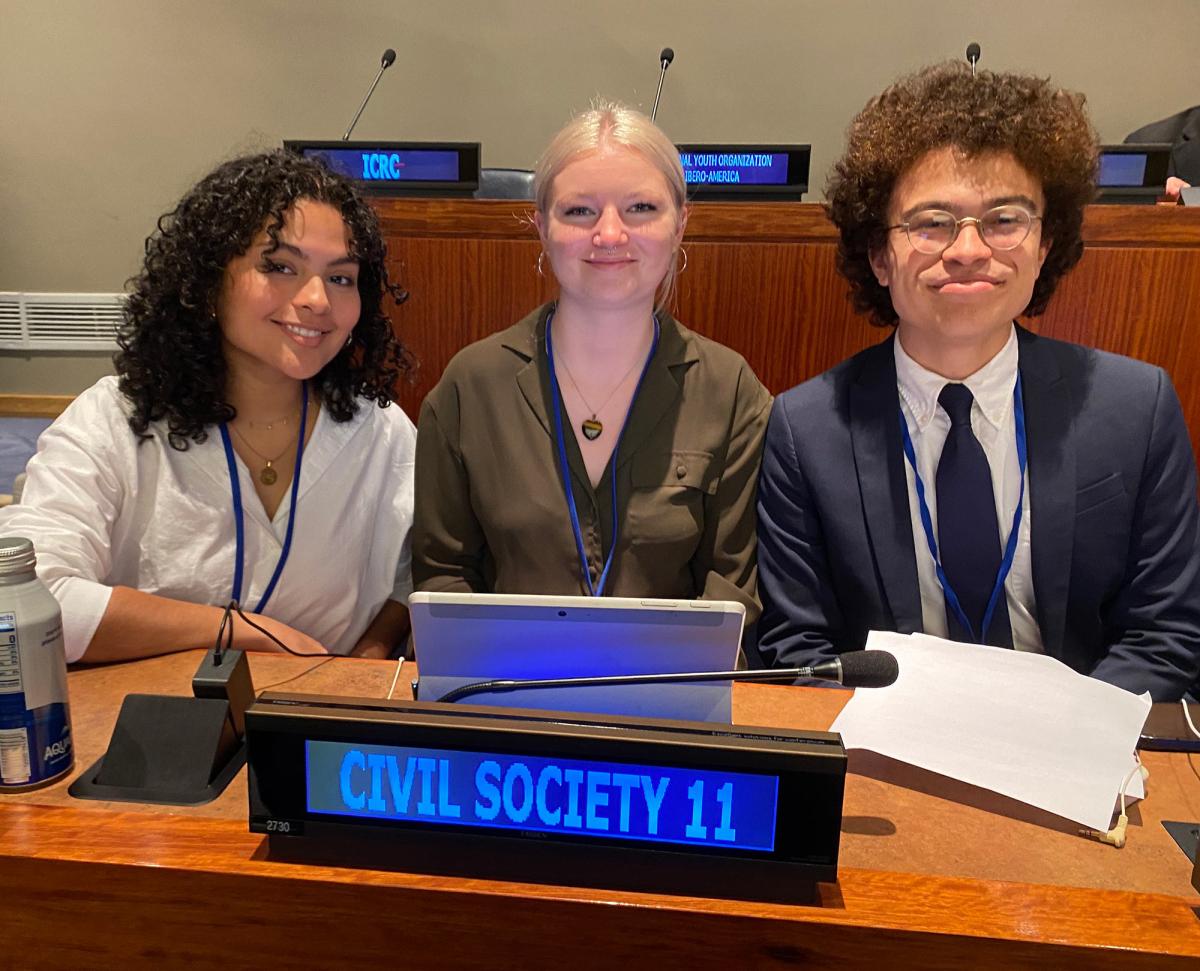
Clay’s statement (PDF) was drafted by students in Professor of Political Science Matthew Breay Bolton’s (PhD) Global Politics of Disarmament and Arms Control course. Through consultation with 70 civil society organizations and coalitions around the world, including two Nobel Peace Prize laureates, Abdulla AlSuwaidi ‘25, Finance (Lubin), Elena Bater ’25, Peace and Justice Studies, Victoria Klioutchnikov ’25, Global Marketing Management (Lubin), Ke Luo (Luke) ‘24, Political Science, Gianna Matteo ‘26, Arts and Entertainment Management (Lubin), Chandler Murphy ‘24, Political Science, and Daniel Welden ’26, Political Science, helped prepare the testimony, which centered around youth inclusion and disarmament education.
“We the youth have the most to gain from a future that is peaceful, just, inclusive, prosperous and environmentally sustainable,” said Clay in the statement. “But rather than repeating clichés that ‘youth are the future,’ please see that we are here now. We are at the frontlines of social movements calling for disarmament, human rights, climate action, and an end to police brutality.”
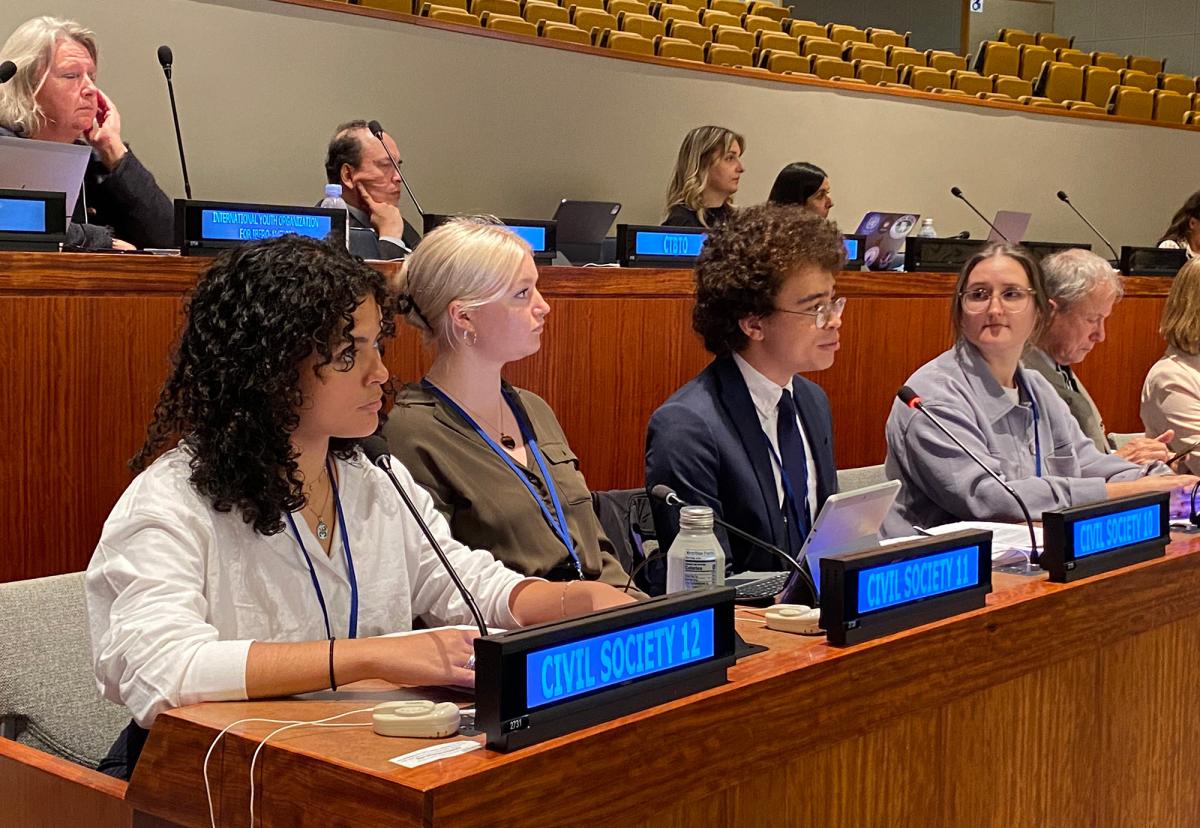
Clay hopes the statement will illustrate his generation's passion in advocating on this topic. He said, "I hope when others read or hear the speech, they take away that youth voices are strong, and they will be heard when it comes to disarmament because we need this current generation and the next to be pushing for not only an end to nuclear weapons, lethal autonomous weapons, but all weapons that in its use stand in direct violation of international humanitarian law."
Hipkins, whose internship placement is with Reaching Critical Will, the disarmament project of the Women’s International League for Peace and Freedom, delivered a statement focused on gender, intersectionality, and disarmament that was co-signed by 17 civil society organizations.
In Hipkins's statement (PDF), she noted that “The patterns of harm caused by weapons and war, the diversity of people participating in disarmament processes, and the norms, discourse, and analysis of militarism” all have gendered implications, adding that “diversity is essential for challenging socially constructed norms about identity that impact the approach of diplomats, activists, and academics to weapons and militarism.”
Speaking at the UN was particularly meaningful on a personal level for Hipkins, who said, "When I first moved to New York City, my family and I stayed at the hotel across the street from the UN. You could see the Secretariat building from the window of our room. I’d always dreamed of working at the UN in some capacity, and so being able to deliver a statement with fellow Pace students at my side, especially in my last semester, felt like a really full circle moment for me."
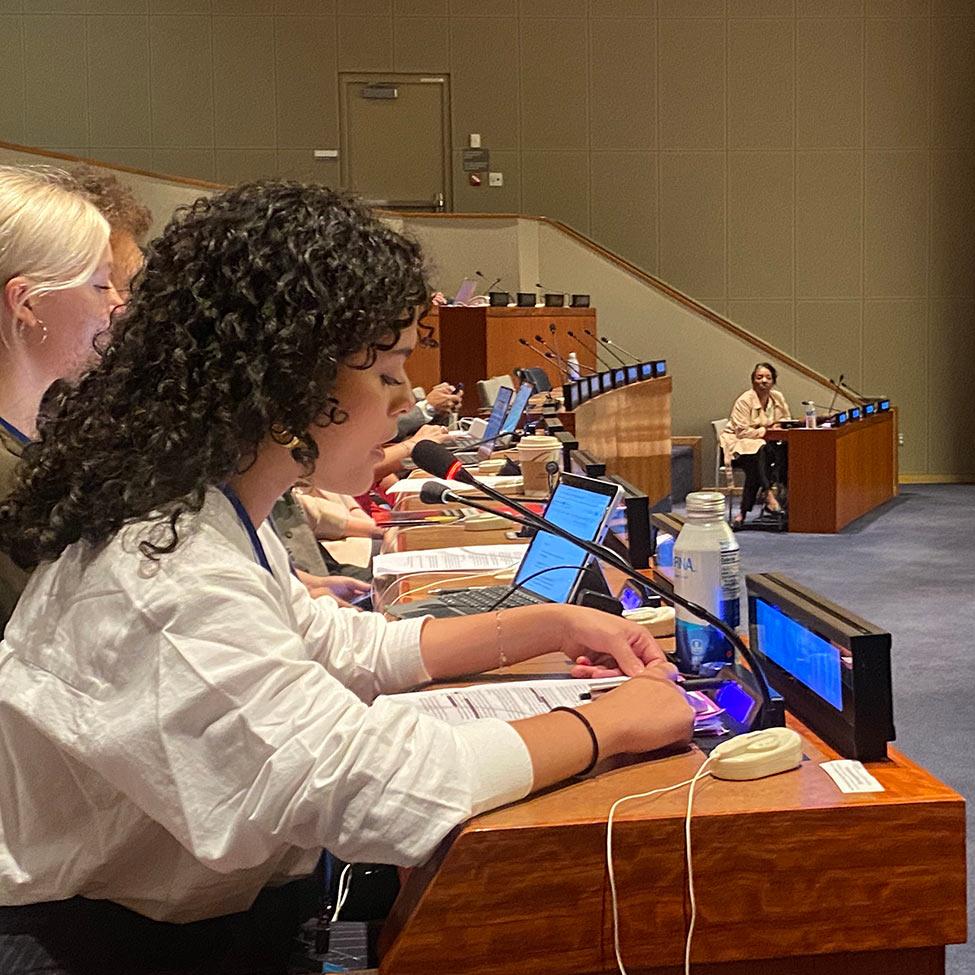
Cintrón Soto's statement (PDF) focused on the “use of cyberspace for peaceful purposes.” Speaking on behalf of ICT4Peace and eight other organizations, she emphasized, “The Internet and connected devices are being weaponized in ways that negatively impact on human rights, such as through surveillance, hacking, censorship, and intentional disruption of internet services and access.”
On the experience, Cintrón Soto said, "Being a student meant representing the dreams and voices of my peers, advocating for transparency and change. As a Latina, I emphasized the importance of diverse voices in shaping a more inclusive and equitable world. Ultimately, I look forward to seeing more strong and powerful Pace students use opportunities like these to amplify their voice and know that meaningful change is possible."
Pace students speaking at the United Nations has become a mainstay in the Political Science and Peace and Justice Studies programs, providing students real-life opportunities to advocate on globally significant issues. Additionally, The International Disarmament Institute, co-directed by Bolton and Welty, is becoming a space of world-class education and research, and plays a convening role in support of disarmament policymaking, from humanitarian, human rights and environmental perspectives. Pace’s contributions to promoting the involvement of young people in disarmament forums were featured in a report this year by the UN Secretary-General.
More from Pace
A record-number 30 Pace University students have been accepted into the 2023 class of the United Nations Academic Impact and Millennium Campus Network Fellowship Program, the University today announced.
As recipients of a 2022 Dyson Summer Research Award, Dante Dallago ’24, Directing and Peace and Justice Studies, and Kalina Walaski ’24, Acting and Peace and Justice Studies, collaborated on “Happy Holidays,” an investigative theater performance piece exploring the dynamics of the holiday dinner table from the perspective of Gen Z students.
On Thursday, October 13, 2022, Molly Rosaaen ’22, Political Science delivered a statement, drafted by Dyson College students, to the United Nations General Assembly First Committee.
Haub Law’s Trial Team Finishes Big at Hofstra’s 2023 National Medical-Legal Trial Competition
Congratulations to Haub Law’s trial team for finishing as semi-finalists at the 2023 Maurice A. Deane School of Law at Hofstra University and the Donald and Barbara Zucker School of Medicine at Hofstra/Northwell National Medical-Legal Trial Competition held October 6-8th.
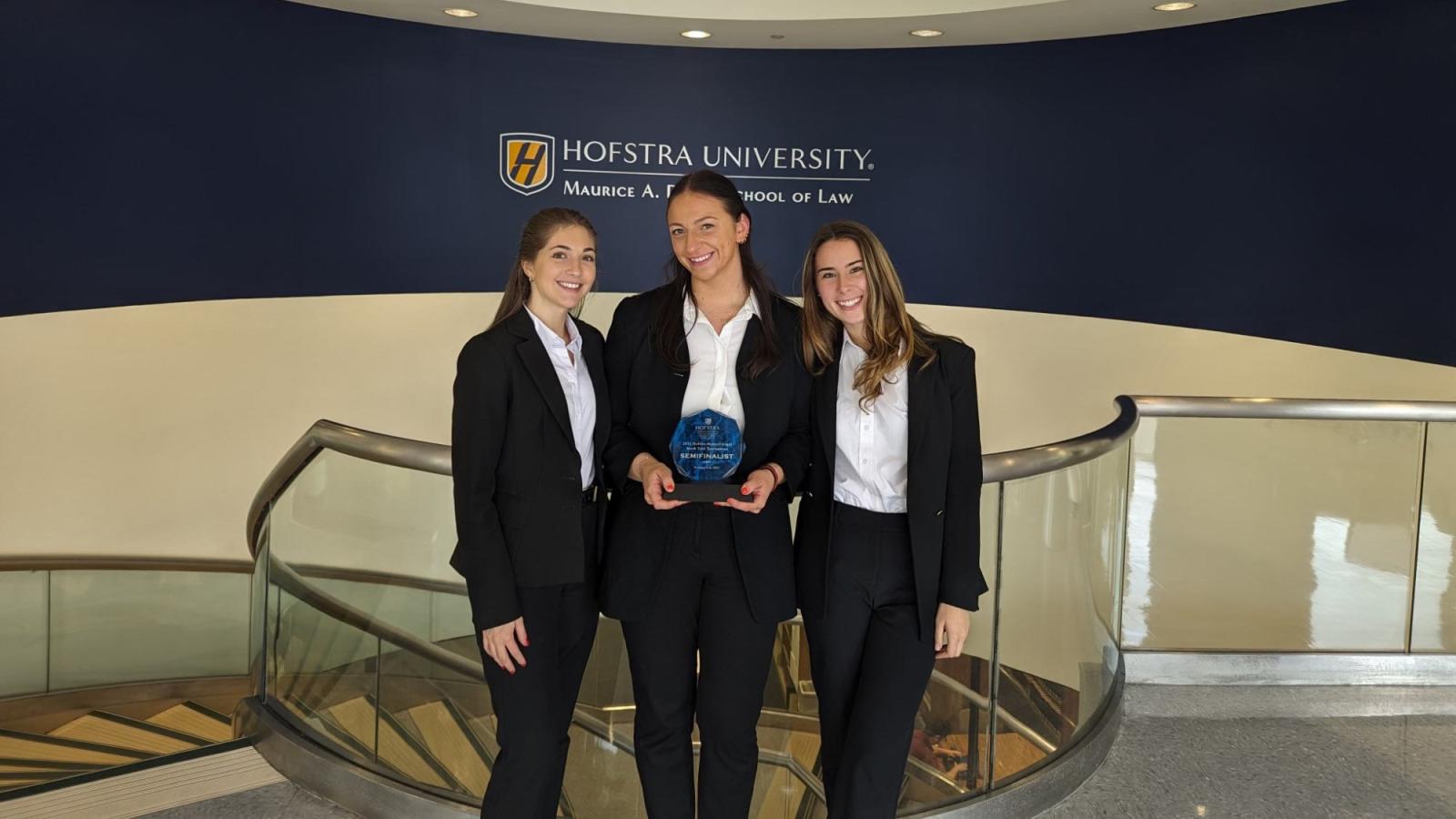

Congratulations to Haub Law’s trial team for finishing as semi-finalists at the 2023 Maurice A. Deane School of Law at Hofstra University and the Donald and Barbara Zucker School of Medicine at Hofstra/Northwell National Medical-Legal Trial Competition held October 6-8. With 20 schools competing in this year's Competition, Haub Law placed in the top four teams of this competition. During the semi-final round, our defense team put on a phenomenal case, but ultimately lost to University of Illinois Urbana-Champaign who went on to win the entire competition. Hofstra’s Medical-Legal Trial Competition is the only trial competition in the country where a medical school and a law school collaborate to simulate real-life expert testimony by doctors.
Alexandra Stata (3L), Arianna Cruickshank(3L), and Katerina Balukas(2L) competed alongside their coaches Bianca Mayard Francois and Alexis Epstein. Alexandra Stata took on both sides of the trial, competing as the Plaintiff with Arianna Cruickshank, and the Defense with Katerina Balukas. “This is my second time competing in this competition and the preparation is extremely difficult,” said Alexandra Stata (3L). “Throughout the competition, you continue to learn things that you didn't originally consider with regard to the various medical conditions included in the problem at hand. This makes the competition even more exciting, but tremendously challenging. As challenging as this competition is, it is the closest simulation to real world trial experience you can get and is my favorite competition that I have competed in during my time with the advocacy program.”
Professor of Trial Practice and Director of Haub Law’s Advocacy Programs, Louis Fasulo, believes this competition to be “one of the most competitive mock trial competitions.” “The team advanced through the competition as a result of their great skill-set and solid grit,” said Professor Fasulo. “I am so proud of them for providing us with our best finish in this competition ever.”
Pace University Celebrates Opening of 15 Beekman, a State-of-the-Art New Residence Hall, Academic Space, and Campus Center
With a lobby full of excited students, faculty, staff, and community members, Pace University cut the ribbon to celebrate the official opening of its brand-new building at 15 Beekman.

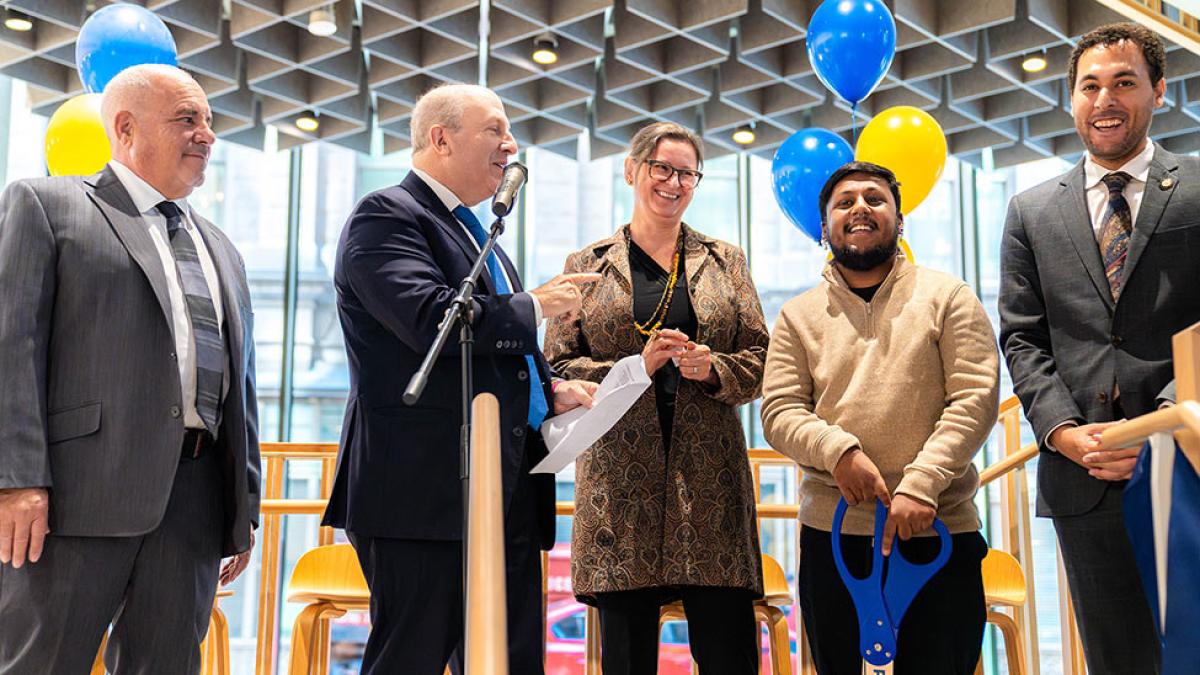
Board Chair Rob Sands and President Marvin Krislov Lead Ribbon-Cutting for 26-Story Mixed-Used Building, Latest Phase of University's Investment in Lower Manhattan Campus
With a lobby full of excited students, faculty, staff, and community members, Pace University cut the ribbon to celebrate the official opening of its brand-new building at 15 Beekman.
15 Beekman is a 26-story mixed use vertical learning hub that represents the next step in the years-long investment that Pace is making in its lower Manhattan campus. At the corner of Beekman and Nassau streets, the building features a residence hall housing nearly 500 students, dining facilities, a state-of-the-art library and learning center, tech-enabled classrooms, and three floors that constitute a dedicated home for the Seidenberg School of Computer Science and Information Systems.
During the ribbon-cutting ceremony, Pace Board Chair Rob Sands, President Marvin Krislov, and New York City Council Member Christopher Marte provided a warm welcome and congratulations to the diverse group in attendance.
President Krislov spoke to students about how the new building is more than just amazing architecture and swaths of natural light and cityscapes—it puts the academic experience at the fore.
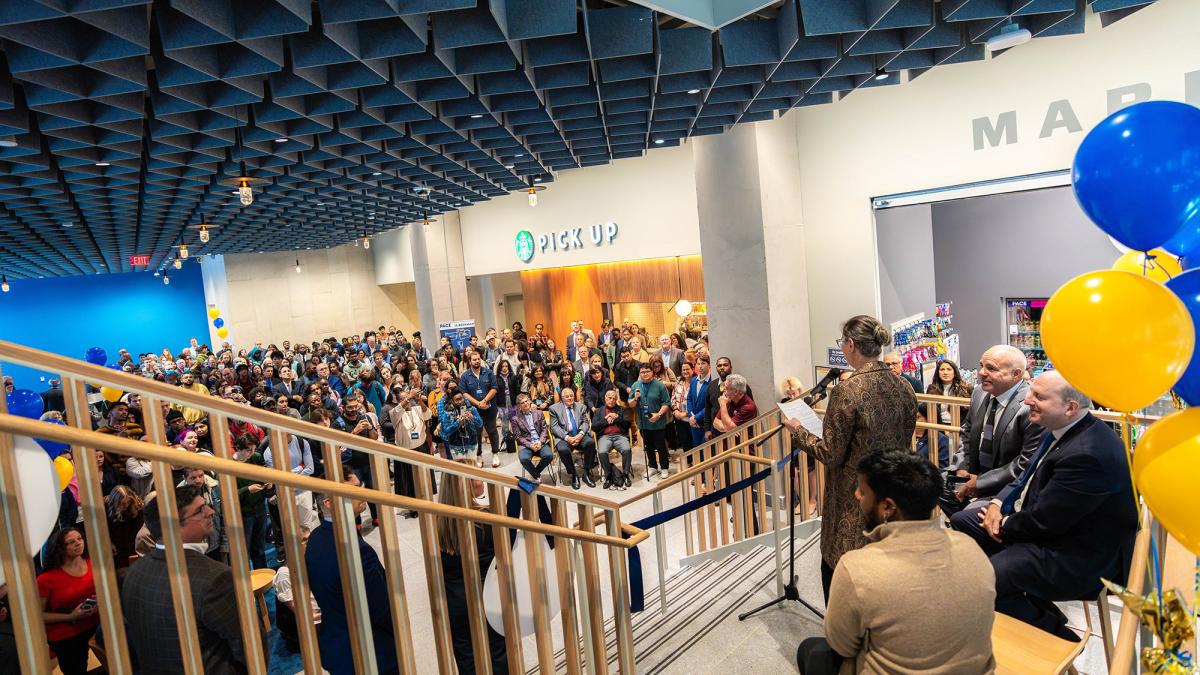
“15 Beekman is part of the amazing transformation of our New York City campus and a symbol of the powerful new future we’re building for Pace University,” President Krislov said in his remarks to the crowd. “We could not be more excited for this new space that will provide even more incredible opportunities for our students, faculty, and staff for decades to come.”
Pace Board Chair Rob Sands connected the investment into 15 Beekman with Pace’s motto of Opportunitas.
“I’m a big believer in Pace University and the work that we do here,” said Chair Sands. “We create opportunities for our students, and we help to change lives. The transformation of this campus is about ensuring that we remain equipped to deliver on that commitment, and this building demonstrates clearly that we’re ready to do that for the 21st century.”
Vice President of Campus Planning and Facilities Ibi Yolas highlighted the collaborative efforts that went into ensuring the successful construction and opening of 15 Beekman.
“I’m grateful to the countless designers, contractors, project managers, and others who made this ribbon cutting possible,” said Vice President Yolas. “15 Beekman is a state-of-the-art facility that combines living and learning. The building establishes a strong public presence and affords access to views and natural light throughout, so it will be an incredible experience for all who use it.”
“Pace University is such a great asset to our downtown community and we are excited to join the opening of 15 Beekman,” said Council Member Marte. “The environment that students learn in is so important to their ability to focus, to relax, to socialize, and to study. This new building exceeds the standards of academic buildings and I am eager to see how it will contribute to Lower Manhattan as a whole.”
NYC Student Government President Aman Islam celebrated the diversity of uses and services that 15 Beekman provides for students here at Pace.
“Seidenberg is one of the hottest schools here at Pace and I am so glad they are getting to move into a gorgeous and innovative space on our campus,” Islam said. “I am also extremely impressed with the design of the building, allowing for academics to be at the forefront of its use as the bottom half of the building while still ensuring epic views for all of our residential students.”
About Pace University
Since 1906, Pace University has been transforming the lives of its diverse students—academically, professionally, and socioeconomically. With campuses in New York City and Westchester County, Pace offers bachelor, master, and doctoral degree programs to 13,600 students in its College of Health Professions, Dyson College of Arts and Sciences, Elisabeth Haub School of Law, Lubin School of Business, Sands College of Performing Arts, School of Education, and Seidenberg School of Computer Science and Information Systems.

